The Allure and Significance of Dragons
Dragons, these majestic creatures of lore and fantasy, have long captivated the imaginations of readers and audiences worldwide. From the fire-breathing behemoths in “Dungeons & Dragons” to the wise and mysterious creatures in ancient myths, dragons symbolize power, wisdom, and often, insurmountable challenge. Their presence in fantasy literature is not just for spectacle; it’s a deep-rooted symbol of strength, magic, and myth.
Criteria for Ranking the Top 10 Dragons
In our journey to uncover the top dragons in fantasy literature, we’ve set specific criteria to guide our selection. These criteria include the dragon’s power and influence within their respective universes, their popularity among fans, and their overall impact on the genre. Whether it’s the strength of Borys or the cunning intelligence of Tiamat, each dragon has been chosen for its unique contributions to fantasy literature.
Key Highlights in the Realm of Dragons
Dungeons & Dragons Powerhouse: We’ll delve into the world of “Dungeons & Dragons,” exploring iconic dragons like Arauthator and Klauth, whose immense power and lore have shaped the game’s universe.
Game of Thrones and Beyond: The dragons of “Game of Thrones,” such as the mighty Balerion, brought a new dimension to dragon mythology, influencing countless narratives in modern fantasy.
Cinematic and Literary Dragons: Our exploration also extends to the most powerful movie dragons, including the beloved Toothless from “How to Train Your Dragon” and Haku from “Spirited Away.” These characters have left indelible marks in the hearts of audiences.
The Diversity of Dragon Myths: We recognize the vast range of dragon portrayals, from the legendary Bahamut in ancient lore to the digitally-rendered dragons in top gaming titles. Each dragon has its unique flavor and backstory, contributing to the rich tapestry of dragon mythology.
Beyond Fantasy: Our list even touches on the unexpected realms where dragons reign, such as King Ghidorah from the Godzilla series, showcasing the versatility and widespread appeal of these magnificent beasts.
In this introductory chapter, we set the stage for a thrilling exploration of the most powerful, influential, and popular dragons in fantasy literature. Join us as we embark on this fantastical journey, unraveling the tales and legends of these awe-inspiring creatures that have shaped the world of fantasy literature and beyond.
The Essence of Dragon Power in Fantasy
Defining Dragon Power in Fantasy Worlds
Dragons have long been a cornerstone of fantasy literature, embodying power and majesty beyond the ordinary. But what exactly constitutes the power of a dragon in these fantastical realms? Is it their ability to breathe fire, as seen in the destructive force of the dragons in “Game of Thrones”? Or does their power lie in their ancient wisdom, as exemplified by Bahamut, the legendary dragon revered in multiple cultures?
The Multifaceted Nature of Dragon Power
Physical Prowess: In the world of “Dungeons & Dragons,” dragons like Arauthator and Klauth are renowned for their physical strength and magical abilities. Their power is palpable, affecting not only the characters in the story but the world itself.
Mystical Influence: Dragons often possess abilities that transcend mere physical strength. Tiamat, a central figure in dragon mythology, wields power that shapes the very fabric of her domain. This mystical aspect elevates dragons from mere beasts to deities in their respective universes.
Symbolic Significance: The power of a dragon can also be symbolic. For instance, the dragons in “Harry Potter” represent formidable challenges to be overcome, serving as metaphors for personal growth and triumph.
Dragons as Catalysts in Fantasy Narratives
Dragons are not just powerful entities; they are pivotal to the narrative progression in fantasy literature. Their actions and presence often drive the plot, create conflict, and lead to critical turning points. In “How to Train Your Dragon,” Toothless serves as a bridge between humans and dragons, transforming the story’s trajectory.
Examples of Narrative Influence
Dungeons & Dragons: In this universe, dragons like Dragotha don’t just add a layer of challenge; they shape the lore and history of the world itself.
Game of Thrones: The presence of dragons like Balerion, the most powerful of his kind, changes the political landscape, influencing wars and the fate of kingdoms.
Cinematic Dragons: In movies, dragons like Haku from “Spirited Away” and King Ghidorah from “Godzilla” serve as central figures, around which entire stories revolve.
The power of dragons in fantasy literature is a complex blend of physical might, mystical influence, and narrative significance. From the destructive force of a fire-breathing dragon to the subtle, symbolic strength of a wise old serpent, dragons continue to captivate and inspire, serving as key drivers in the fantastical worlds they inhabit. Whether in books, movies, or games, these majestic creatures remain an enduring symbol of power in the realm of fantasy.
#10 | Falkor (from “The Neverending Story” by Michael Ende)
Venture into the magical world of Michael Ende’s “The Neverending Story” and meet Falkor, the luckdragon, who gracefully secures the tenth spot on our list. Unlike the typical depiction of dragons as fearsome beasts, Falkor brings a refreshing change with his supportive, wise nature, and an almost dog-like appearance that endears him to all. His kind and gentle demeanor, combined with his ability to offer guidance and hope, makes him a unique and beloved figure in fantasy literature.
Falkor’s role in “The Neverending Story” goes beyond that of a mere companion. He symbolizes the power of hope and imagination in a world where possibilities are limitless. His interactions with the protagonist, Bastian, are not just about adventure; they are a journey of self-discovery, friendship, and the realization of dreams. Falkor’s optimistic outlook and unwavering support play a pivotal role in the narrative, showcasing the importance of encouragement and belief in oneself.
The popularity of Falkor stems from his ability to resonate with readers of all ages. He represents the joy and wonder of childhood, the courage to face challenges, and the comforting presence of a steadfast friend. His character transcends the pages of the book, leaving a lasting impression on the hearts of those who journey through the story.
Falkor’s inclusion in our top ten list is a testament to his enduring appeal and the impact he has had on the genre. He brings a sense of wonder and whimsy to the world of fantasy dragons, reminding us that these mythical creatures can be not just mighty and powerful but also sources of inspiration, joy, and companionship. Falkor’s presence in “The Neverending Story” enriches the narrative and continues to inspire a sense of adventure and the belief in the power of dreams.
Image by Lucieniibi
#9 | Saphira (from “Eragon” series by Christopher Paolini)
Embark on an adventure through the pages of Christopher Paolini’s “Eragon” series, where Saphira, the majestic blue dragon, claims her rightful place as number nine on our list. Saphira is not just a dragon; she is a central figure whose presence and bond with Eragon redefine the classic dragon-rider relationship, capturing the hearts of a new generation of fantasy readers.
Saphira’s significance in the series goes beyond her impressive physical abilities. She is integral to the plot and character development, serving as a mentor, protector, and companion to Eragon. Her wisdom, empathy, and strength make her a standout character, offering depth and richness to the narrative. Her telepathic bond with Eragon adds a unique and intimate dimension to their relationship, setting a new standard for how dragons and their riders communicate and interact in fantasy literature.
Her popularity among readers stems from her portrayal as a wise, yet fierce and loyal creature. Saphira’s character resonates deeply with fans for its complexity and the emotional depth she brings to the story. She is not just a means of transport or a weapon in battle; she is a character with her own thoughts, feelings, and agency, making her a truly modern interpretation of a fantasy dragon.
Saphira’s inclusion in our top dragons list highlights the evolving portrayal of dragons in contemporary fantasy. She represents a shift from dragons being mere beasts to being characters in their own right, capable of forming deep, meaningful relationships with humans. Her role in the “Eragon” series has made a lasting impression on the genre, endearing her to readers around the world and cementing her status as one of the most beloved dragons in fantasy literature.
#8 | Norberta (from “Harry Potter” series by J.K. Rowling)
Step into the enchanting world of J.K. Rowling’s “Harry Potter” series, where Norberta, initially known as Norbert, offers a delightful and unique twist to the dragon lore. As the Norwegian Ridgeback dragon hatched by Hagrid, she may not be the most powerful dragon in the series, but her story adds a heartwarming and whimsical element, earning her the eighth spot on our list.
Norberta’s journey from a mischievously dangerous hatchling in Hagrid’s care to her later life in the Romanian dragon sanctuary illustrates the series’ depth and attention to detail. Her story adds layers to the magical world of Harry Potter, showcasing the care and complexity with which magical creatures are treated in Rowling’s universe. Norberta represents the intersection of the magical and the mundane, bringing a sense of wonder and charm to the series.
Her popularity among fans stems from her memorable introduction in “Harry Potter and the Philosopher’s Stone.” Norberta’s presence in the series, though not central to the main plot, contributes significantly to the magical diversity and world-building of Hogwarts and its surroundings. Her story resonates with fans for its blend of humor, danger, and the unexpected challenges of caring for a magical creature.
Norberta’s inclusion in our top dragons list underscores the importance of every character in the Harry Potter universe, no matter how big or small their role. She has become a beloved part of the series, appreciated for adding a unique dimension to the world of Harry Potter and for reminding us of the joys and challenges that come with handling magical creatures. Norberta’s story enriches the magical tapestry of the series, making her a cherished and memorable dragon in the world of fantasy literature.
#7 | Hungarian Horntail (from “Harry Potter” series by J.K. Rowling)
Enter the magical world of J.K. Rowling’s “Harry Potter” series, where the Hungarian Horntail stands as a formidable and fearsome dragon, earning its place as number seven on our list. Known for its spine-chilling appearance, complete with black scales, bronze horns, and a tail spiked with iron thorns, the Hungarian Horntail is a symbol of danger and excitement in the Harry Potter universe.
The Hungarian Horntail’s memorable appearance in the Triwizard Tournament represents one of the most thrilling and perilous challenges faced by the protagonist, Harry Potter. Its fierce demeanor and daunting presence add an intense level of excitement to the series, making its scenes some of the most gripping in the entire saga. The Horntail challenges Harry to outmaneuver and outthink, pushing him to the limits of his courage and skill.
This dragon’s ranking is a testament to its impact on the Harry Potter series. It’s not just the physical danger that the Horntail represents; it’s a pivotal point in the narrative, marking a moment of significant personal growth and bravery for Harry. The Hungarian Horntail has become a fan favorite, symbolizing the series’ blend of magical fantasy and the confronting of one’s deepest fears.
The Hungarian Horntail’s role in “Harry Potter” has made it one of the most iconic dragons in contemporary fantasy literature. It captures the imagination of readers and viewers alike, contributing to the rich and diverse magical world that J.K. Rowling has created. Its presence in the series is a powerful reminder of the enchanting and sometimes dangerous creatures that inhabit the magical world, making the Hungarian Horntail a deserving entry in our top dragons list.
By Biohazardia (DeviantArt)
#6 | Temeraire (from “Temeraire” series by Naomi Novik)
Dive into the enthralling world of Naomi Novik’s “Temeraire” series, where you’ll meet Temeraire, a dragon unlike any other. As a key figure in this alternate history of the Napoleonic Wars, Temeraire distinguishes himself with his remarkable intelligence and endearing personality. This isn’t just a story about battles and strategy; it’s a tale that weaves the intricate bond between a dragon and his human companion, setting a new standard for dragon characterization in fantasy literature.
Temeraire’s placement at number six is a recognition of his unique role in blending genres, seamlessly merging historical fiction with fantasy. This cross-genre approach has not only captivated a dedicated fanbase but has also introduced a fresh perspective on how dragons can be portrayed. Temeraire’s character is developed with as much depth and complexity as any human protagonist, making him relatable and genuinely impactful.
What sets Temeraire apart is the way his story challenges traditional dragon tropes. He is not just a mighty beast of war; he is thoughtful, capable of deep emotion, and often questions the world around him, including the morality of war. This intellectual depth, coupled with his interactions and relationships, adds a rich layer to the narrative, making it both thought-provoking and immensely enjoyable.
Temeraire’s influence extends beyond the pages of the novels. He has become a beloved character in the fantasy community, revered for his intelligence, loyalty, and the unique role he plays in an imaginatively altered history. His ranking on this list is a nod to his significance in modern fantasy literature, where he stands as a symbol of innovation and the endless possibilities of dragon characters in storytelling. With Temeraire, Naomi Novik has redefined what a dragon can be, creating not just a creature of fantasy, but a character with heart, soul, and intellect.
#5 | Glaurung (from “The Silmarillion” by J.R.R. Tolkien)
Embark on a journey to Middle-earth to encounter Glaurung, the Father of Dragons, a seminal figure in the realm of high fantasy from J.R.R. Tolkien’s “The Silmarillion.” Glaurung stands as a towering figure in the legendarium of Tolkien, a being of cunning intelligence, mesmerizing power, and profound influence. His role in the history of Middle-earth is not just significant; it is foundational, setting the stage for all dragons that followed in the genre.
Glaurung’s place at number five on our list is a testament to his groundbreaking impact on the portrayal of dragons in literature. Unlike the more widely known Smaug, Glaurung’s terror is not just physical but psychological, manipulating and deceiving with a malevolence that adds layers of depth to his character. He is the archetype of the ancient, evil dragon, a creature that embodies both the physical and moral corruption that dragons came to represent in many fantasy stories.
Despite being less famous than Smaug, Glaurung’s influence among Tolkien enthusiasts and fantasy aficionados is profound. He is often credited with shaping the concept of dragons in Tolkien’s world and by extension, in the broader genre of high fantasy. His interactions with the characters of Middle-earth are complex and impactful, leaving a legacy that reverberates through the narrative of “The Silmarillion” and beyond.
Glaurung’s characterization, his pivotal role in the First Age of Middle-earth, and his unique attributes as the first dragon created by Morgoth make him a character of unparalleled significance in Tolkien’s works. His placement on this list recognizes not just his power and cunning but also his foundational role in defining what a dragon can be in the realms of fantasy literature. Glaurung remains a quintessential dragon, a forebearer of an entire species, and a character whose legacy continues to inspire and captivate readers.
#4 | Ancalagon the Black (from “The Silmarillion” by J.R.R. Tolkien)
Prepare to be awestruck by the legendary Ancalagon the Black, a name that resonates with immense power and awe in the annals of fantasy literature. Hailing from J.R.R. Tolkien’s “The Silmarillion,” this colossal dragon is not just a character; he is a force of nature, embodying the pinnacle of draconic might and terror in Middle-earth. Ancalagon’s sheer size and strength make him a figure of unparalleled grandeur in Tolkien’s universe, setting him apart as one of the most formidable creatures ever conceived in fantasy lore.
Why does Ancalagon the Black claim the fourth spot on our list? The answer lies in his symbolic significance and the profound impact he has had on the genre. Ancalagon is not just another dragon; he represents the ultimate manifestation of dragon power. His legendary battle during the War of Wrath, where he shattered mountains with his fall, has become a defining moment in the rich tapestry of Middle-earth’s history. This awe-inspiring imagery cements his status as a symbol of the ultimate challenge that heroes must face in high fantasy narratives.
Ancalagon’s influence extends far beyond the pages of “The Silmarillion.” He has become a benchmark for dragon portrayals in literature and other media, inspiring countless adaptations and interpretations of dragons as cataclysmic forces. Among fans of Tolkien and fantasy enthusiasts, Ancalagon the Black is revered for his grandeur and the epic scale of his presence.
In essence, Ancalagon the Black’s placement at number four is a tribute to his enduring legacy as one of the most powerful and awe-inspiring dragons ever created. He captures our imaginations, reminding us why dragons have been a cornerstone of fantasy literature for generations. Ancalagon’s name will forever echo as a symbol of the ultimate dragon, a creature of unrivaled power and majesty in the realm of fantasy.
#3 | Toothless (from “How to Train Your Dragon” by Cressida Cowell)
Toothless, the charismatic dragon from Cressida Cowell’s “How to Train Your Dragon” and its highly successful film adaptations, captures the third spot on our list for numerous compelling reasons. As a character, Toothless has redefined the traditional portrayal of dragons in fantasy, shifting from the typical fearsome beast to a lovable and deeply empathetic character.
Toothless’ journey from a feared dragon to a loyal friend and companion to Hiccup, the story’s protagonist, is a heartwarming tale that resonates with audiences of all ages. His playful personality, combined with moments of bravery and loyalty, has endeared him to fans around the world. Toothless represents a bridge between humans and dragons, showcasing a unique bond based on mutual trust and friendship, rather than fear and domination.
The impact of Toothless extends beyond the pages of the book and the frames of the movie. He symbolizes the evolution of dragons in modern storytelling, where they are not just creatures to be conquered but are intelligent beings with emotions and personalities. This fresh perspective has captivated a massive audience, making Toothless a household name and a beloved character in the realm of fantasy.
The reason for Toothless’ high ranking at number three is not just his popularity, but also his role in changing how dragons are viewed in contemporary culture. His character has contributed significantly to making dragons more accessible and relatable, particularly to younger audiences, and has played a vital role in keeping the magic of dragons alive in modern storytelling. Toothless stands as a testament to the power of innovation in fantasy literature and film, making him a truly deserving character for such a prominent place on our list.
#2 | Drogon (from “A Song of Ice and Fire” by George R.R. Martin)
Drogon, the formidable dragon from George R.R. Martin’s acclaimed “A Song of Ice and Fire” series and its popular television adaptation, “Game of Thrones,” earns the second spot on our list for several compelling reasons. As one of the most iconic dragons in recent fantasy history, Drogon symbolizes raw power, fierce loyalty, and the awe-inspiring majesty that dragons have brought to fantasy narratives for generations.
What sets Drogon apart and secures his high ranking is his significant impact on the storyline and his deep connection with one of the saga’s central characters, Daenerys Targaryen. Drogon is not just a pet or a mount; he is a character in his own right, with a distinct personality and a pivotal role in the narrative. His actions drive key plot points and often serve as turning moments in the series, showcasing the incredible influence a single dragon can have on the fate of entire kingdoms.
Drogon’s presence on-screen and in the books has redefined the portrayal of dragons in modern fantasy. His fearsome appearance, coupled with scenes of devastating power, have left an indelible mark on the audience’s imagination. This portrayal has helped to reignite the popularity of dragons in mainstream culture, making Drogon a symbol of the resurgence of dragons in contemporary fantasy.
Moreover, Drogon’s bond with Daenerys adds an emotional depth to his character, making him more than just a creature of destruction. He is a protector, a symbol of her strength, and, in many ways, a representation of her journey. This complex relationship between dragon and human has captivated fans worldwide, making Drogon a standout character and a key reason for the series’ immense popularity.
In summary, Drogon’s powerful depiction, significant narrative impact, and role in revitalizing dragons in modern fantasy secure his place as the second most iconic dragon in our list. His influence extends beyond the “Game of Thrones” series, leaving a lasting legacy in the world of fantasy literature and television.
#1 | Smaug (from “The Hobbit” by J.R.R. Tolkien)
Smaug, the formidable and cunning dragon from J.R.R. Tolkien’s classic “The Hobbit,” rightfully claims the top spot on our list as the most iconic dragon in fantasy literature. His unmatched combination of intelligence, power, and malevolent charm sets him apart as the quintessential dragon in the realm of fantasy.
Smaug’s significance in “The Hobbit” goes far beyond being a mere antagonist. He is a central figure that encapsulates the allure and terror that dragons have traditionally represented in folklore and myth. His presence in the Lonely Mountain, hoarding an immense treasure, creates an air of mystery and danger that is pivotal to the story’s progression. Smaug’s interaction with Bilbo Baggins, characterized by wit and menace, is not just a highlight of the book but has become one of the most memorable moments in all of fantasy literature.
What truly elevates Smaug to the top position is his impact on the genre. He has become the benchmark against which other literary dragons are measured. His characteristics – a formidable intellect, a terrifying power, and a greedy, solitary nature – have become the standard tropes associated with dragons in subsequent fantasy works. Smaug’s influence can be seen in the portrayal of dragons across a wide range of media, from books to movies to video games.
Smaug’s popularity extends beyond the pages of “The Hobbit.” His depiction in the film adaptation brought him to life for a new generation of fans, further cementing his status as the most iconic dragon in fantasy. The combination of his deep, resonant voice and his visually stunning representation captured the imagination of audiences worldwide.
In summary, Smaug’s unrivaled position as the number one dragon in fantasy literature is a testament to his profound influence on the genre. He embodies the essence of what a dragon represents – power, greed, wisdom, and a touch of malevolence. Smaug is not just a character; he is a symbol of the enduring fascination with dragons in human culture, making him a legendary figure in the world of fantasy.
The Evolution of Dragon Portrayals in Literature
Tracing the Dragon’s Journey Through Time
The depiction of dragons in literature has undergone a remarkable evolution, reflecting the changing tastes, values, and imaginative landscapes of societies throughout history. From the fearsome creatures in ancient myths to the complex characters in modern fantasy, dragons have continuously transformed, mirroring the cultural and artistic shifts of the times.
From Ancient Myth to Medieval Menace
Early Myths: In ancient civilizations, dragons were often seen as divine or semi-divine beings, associated with wisdom, guardianship, and sometimes, elemental forces. These early depictions set the foundation for the diverse dragon myths that followed.
Medieval Literature: The Middle Ages cast dragons as symbols of evil and chaos. In stories like “Saint George and the Dragon,” they were adversaries to be conquered, embodying the ultimate challenge for heroes.
The Renaissance of Dragons in Modern Fantasy
19th Century Romanticism: The Romantic era revived interest in mythical creatures, including dragons. They began to be portrayed more as symbols of nature’s untamed majesty rather than mere monsters.
20th Century and Beyond: In contemporary literature, dragons have gained even greater depth of character. They are no longer just villains or obstacles but are complex figures with their motivations, personalities, and roles within the narrative.
Dragons in Contemporary Literature and Media
The Diverse Roles of Dragons Today
As Symbolic Guardians: In series like “Harry Potter,” dragons serve as guardians of significant objects or challenges, embodying the theme of overcoming great obstacles.
As Characters with Agency: In “Game of Thrones” and “How to Train Your Dragon,” dragons are not just powerful beasts but characters with their own stories and relationships with human characters.
In Video Games and Films: Modern dragons have transcended literature, becoming iconic figures in video games and movies. From the mighty Bahamut in Final Fantasy series to the beloved Toothless in DreamWorks’ animation, dragons continue to captivate audiences in various forms.
The portrayal of dragons in literature is a vivid tapestry, reflecting humanity’s evolving relationship with these mythical beings. From feared creatures of old to respected and beloved characters in modern narratives, dragons continue to be a vital part of our collective imagination, symbolizing our deepest fears, aspirations, and the endless possibilities of the fantasy genre. As we look to the future, it’s clear that dragons will continue to evolve, embodying the ever-changing landscape of human creativity and storytelling.
The Enduring Legacy of Dragons in Fantasy
The Timeless Allure of Dragons
As we conclude our exploration into the realm of dragons in fantasy literature, it becomes evident that these magnificent creatures are more than mere mythical beings; they are symbols of power, mystery, and adventure that have captivated human imagination for centuries. From the formidable dragons in “Game of Thrones” to the friendly Toothless in “How to Train Your Dragon,” each dragon has left an indelible mark on the genre.
The Role and Significance of Dragons
Icons of Power and Majesty: Dragons like Bahamut and Tiamat represent the epitome of strength and ancient wisdom in fantasy literature, embodying the essence of the mythical and the magical.
Agents of Narrative Progression: Whether it’s in “Dungeons & Dragons” or “Harry Potter,” dragons have played pivotal roles in advancing plotlines and adding complexity to the stories they inhabit.
Symbols of Cultural Significance: Dragons in literature are not just creatures of fantasy; they reflect the cultural and historical contexts of their origins, from medieval European dragons to the revered dragons in Asian cultures.
Dragons’ Impact on Popular Culture and Beyond
The influence of dragons extends far beyond the pages of books or the scenes of movies. They are entrenched in popular culture, inspiring a plethora of artworks, video games, and even educational materials. The rise of dragons in gaming, especially in top titles like “Dungeons & Dragons,” has further solidified their status as cultural icons.
The Ever-Evolving Nature of Dragon Myths
In Modern Media: Dragons continue to evolve, adapting to the changing tastes of audiences. The dragons in recent movies and series, such as King Ghidorah in “Godzilla” and Haku in “Spirited Away,” showcase this adaptability and continual reinvention.
In Interactive Platforms: The interactive nature of video games allows for an even deeper exploration of dragon lore, offering players immersive experiences in worlds where dragons are not just creatures but integral parts of the story.
Final Thoughts
Dragons, in their myriad forms and interpretations, remain a cornerstone of fantasy literature and a testament to the boundless creativity of human storytelling. Their enduring appeal lies in their ability to symbolize our deepest fears, greatest aspirations, and unbridled imagination. As we close this chapter, we recognize the dragons’ timeless legacy and look forward to their continued evolution in the vast, uncharted territories of fantasy and beyond.
Readers are encouraged to share their thoughts and preferences. Which dragon captivated your imagination the most? Which mythical beast do you think deserves the top spot in the pantheon of fantasy dragons? Your insights and opinions will help keep the legend of dragons alive in the hearts and minds of fans around the world.
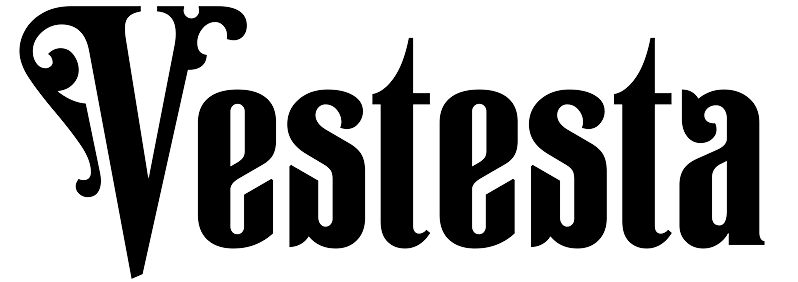



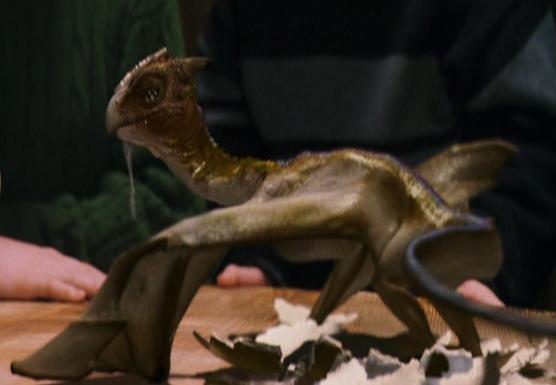
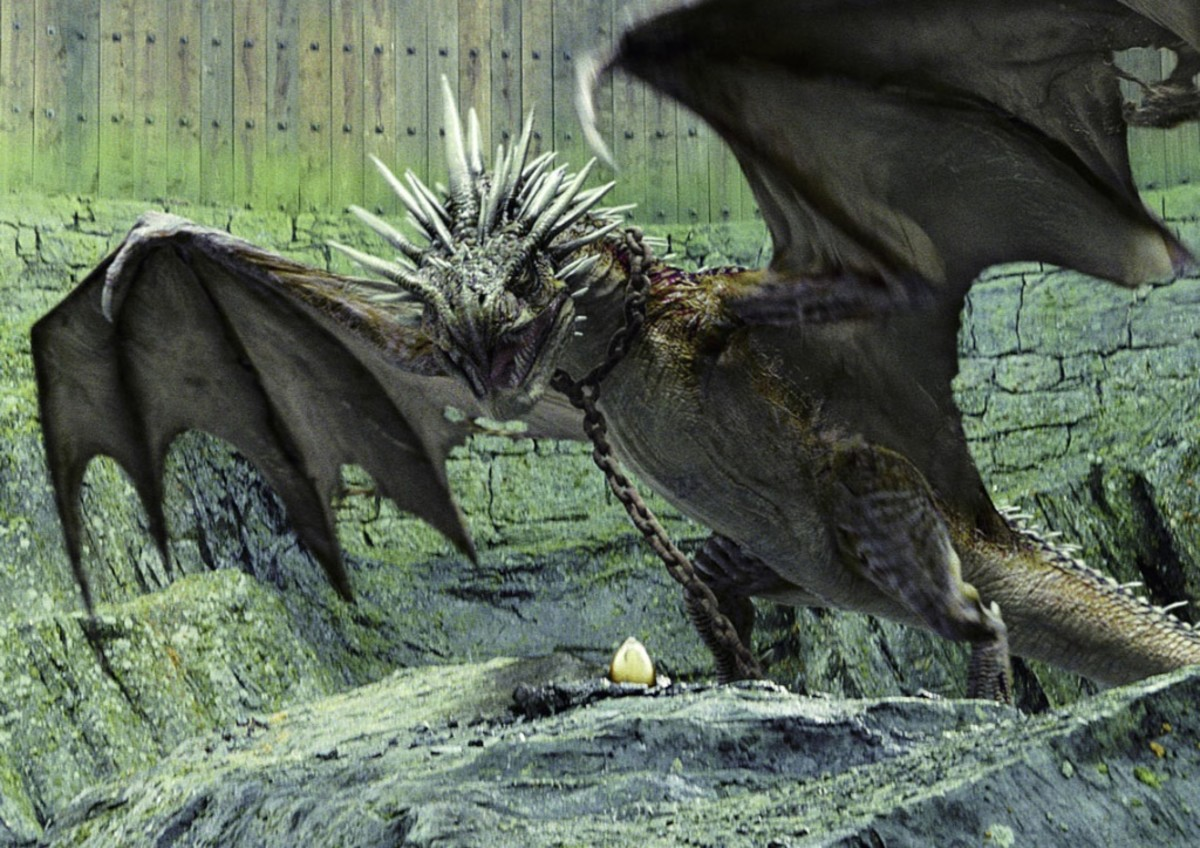

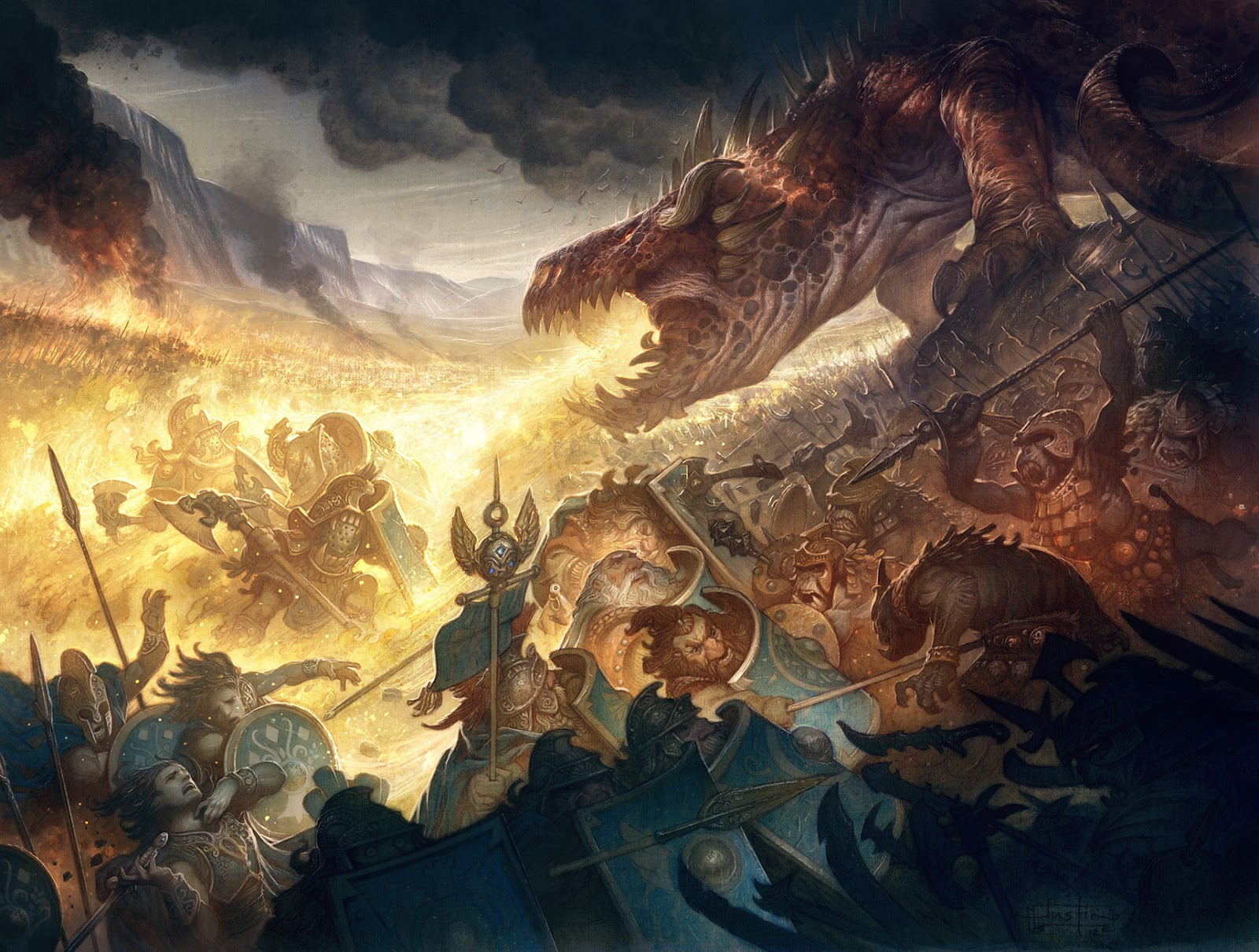
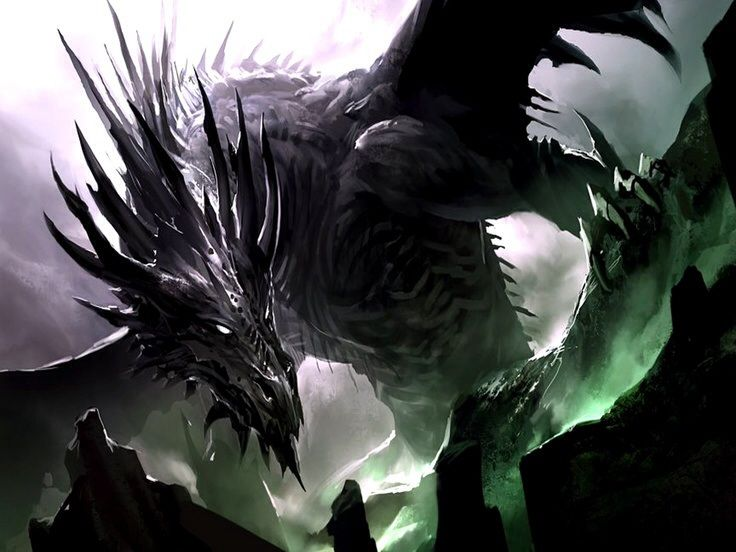
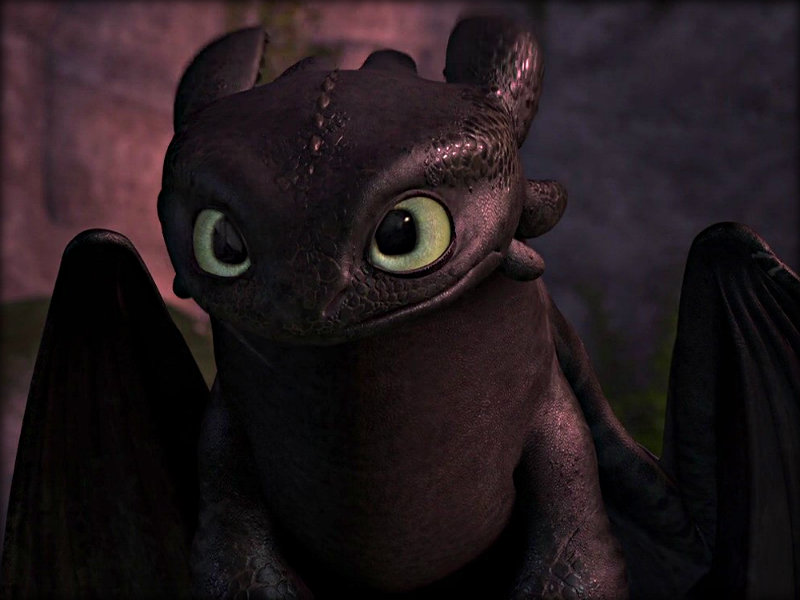
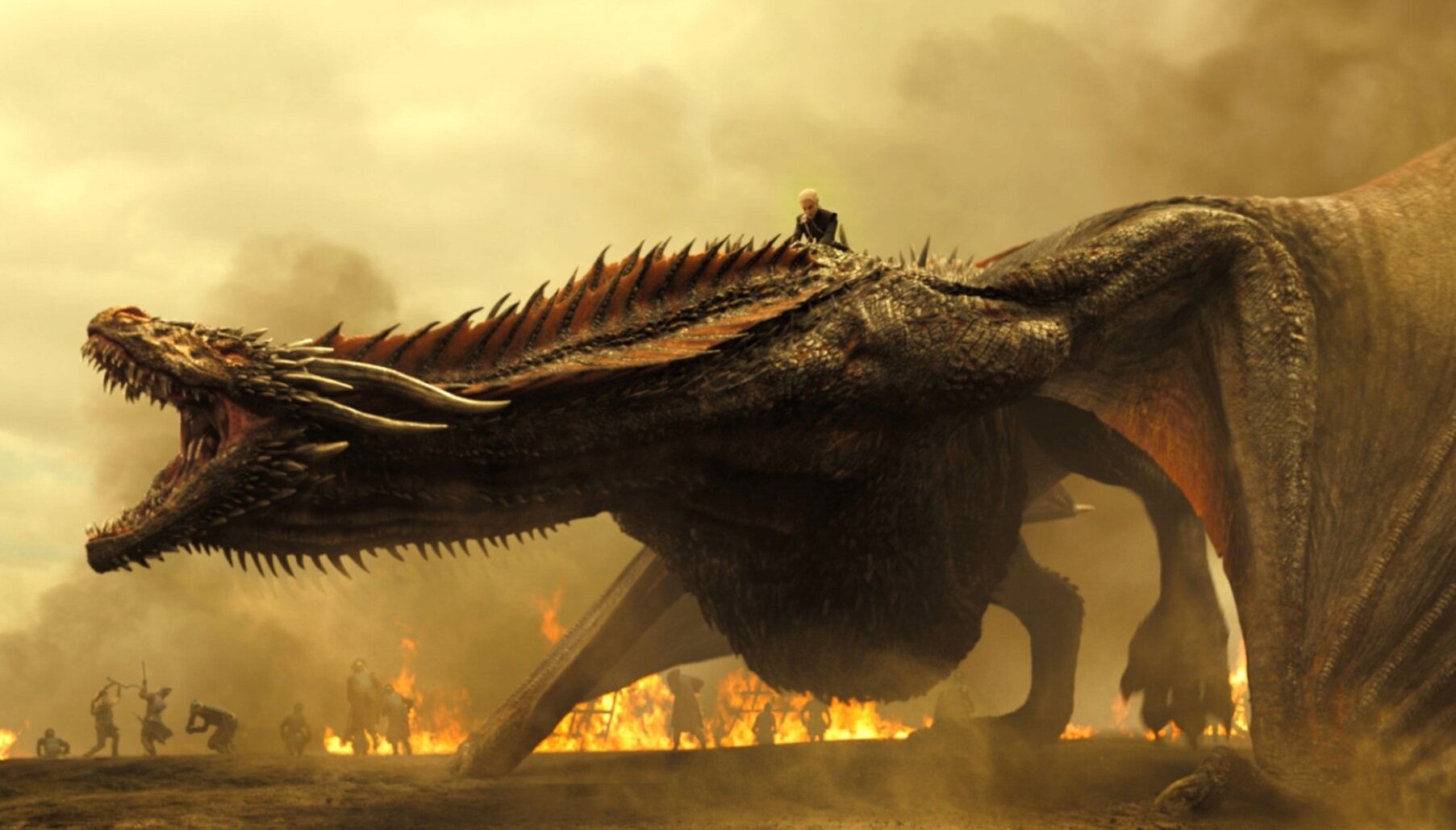




0 Comments